 W
WThe Alpine race is a historical race concept defined by some late 19th-century and early 20th-century anthropologists as one of the sub-races of the Caucasian race. The origin of the Alpine race was variously identified. Ripley argued that it migrated from Central Asia during the Neolithic revolution, splitting the Nordic and Mediterranean populations. It was also identified as descending from the Celts residing in Central Europe in Neolithic times. The Alpine race is mainly distinguished by its moderate stature, neotenous features, and cranial measurements, such as high cephalic index.
 W
WIn the discredited racial anthropology of the early 20th century, the Armenoid type was a subtype of the Caucasian race. According to anthropologist Carleton Coon, the countries of the northern part of Western Asia, namely Anatolia, the Caucasus, Iraq, Iran, and the Levant, were considered the center of distribution of the Armenoid race.
 W
WThe Aryan race is a historical race concept which emerged in the late 19th century to describe people of Indo-European heritage as a racial grouping.
 W
WJohn Beddoe was one of the most prominent English ethnologists in Victorian Britain.
 W
WThe curse of Ham occurs in the Book of Genesis, imposed by the patriarch Noah. It occurs in the context of Noah's drunkenness and is provoked by a shameful act perpetrated by Noah's son Ham, who "saw the nakedness of his father". The exact nature of Ham's transgression and the reason Noah cursed Canaan when Ham had sinned have been debated for over 2,000 years.
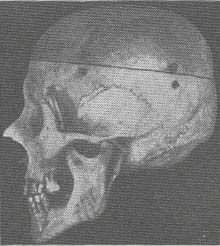 W
WThe Dinaric race, also known as the Adriatic race, were terms used by certain physical anthropologists in the early to mid-20th century to describe the perceived predominant phenotype of the contemporary ethnic groups of southeast Europe.
 W
WDow v. United States, 226 F. 145, is a United States Court of Appeals, Fourth Circuit, case in which a Syrian immigrant, George Dow, appealed two lower court decisions denying his application for naturalization as a United States citizen. Following the lower court decisions in Ex Parte Dow (1914) and In re Dow (1914), Dow v. United States resulted in the Circuit Court's affirmation of the petitioner's right to naturalize based, in the words of Circuit Judge Woods, on “the generally received opinion. .. that the inhabitants of a portion of Asia, including Syria, [are] to be classed as white persons”.
 W
WEthiopid is a historical racial classification of humans. By some, it was called Eastern Hamitic.
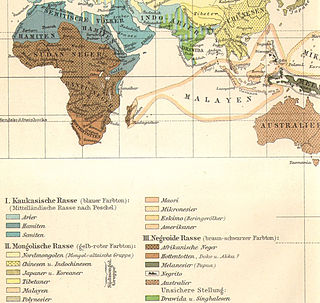 W
WHamites is the name formerly used for some North African peoples in the context of a now-outdated model of dividing humanity into different races which was developed originally by Europeans in support of colonialism and slavery. The term was originally borrowed from the Book of Genesis, where it is used for the descendants of Ham, son of Noah.
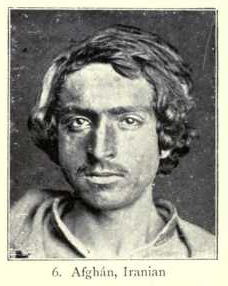 W
WThe Irano-Afghan race is an obsolete term for a physical type most common among populations native to the Iranian plateau. The Irano-Afghan type was classified as belonging to the greater Caucasian race. It was usually associated with the Mediterranean subtype, depending on the authority consulted.
 W
WJaphetite in Abrahamic religions is an obsolete historical Biblical terminology for race coined in 18th century ethnology and linguistics for the peoples supposedly descended from Japheth, one of the three sons of Noah in the Bible. The other two sons of Noah, Shem and Ham, are the eponymous ancestors of the Semites and the Hamites, respectively.
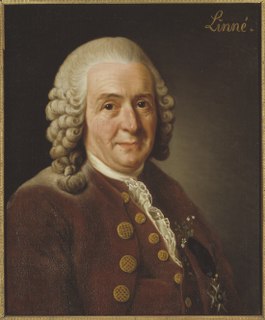 W
WCarl Linnaeus, also known after his ennoblement as Carl von Linné, was a Swedish botanist, zoologist, and physician who formalised binomial nomenclature, the modern system of naming organisms. He is known as the "father of modern taxonomy". Many of his writings were in Latin, and his name is rendered in Latin as Carolus Linnæus.
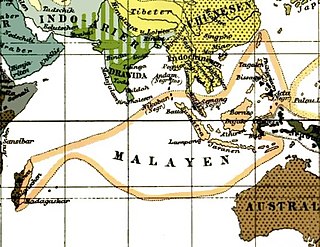 W
WThe concept of a Malay race was originally proposed by the German physician Johann Friedrich Blumenbach (1752–1840), and classified as a brown race. Malay is a loose term used in the late 19th century and early 20th century to describe the Austronesian peoples or to categorize Austronesian speakers into a race.
 W
WMartial race was a designation which was created by army officials in British India after the Indian Rebellion of 1857, in which they classified each caste as belonging to one of two categories, the 'martial' caste and the 'non-martial' caste. The ostensible reason for this system of classification was the belief that a 'martial race' was typically brave and well-built for fighting, while the 'non-martial races' were those races which the British considered unfit for battle because of their sedentary lifestyles. However, according to an alternative hypothesis, British-trained Indian soldiers were among those who had rebelled in 1857 and thereafter, the Bengal Army abandoned or diminished its recruitment of soldiers who came from the catchment area and enacted a new recruitment policy which favored those castes whose members had remained loyal to the British Empire. The concept already had a precedent in Indian culture as one of the four orders (varnas) in the Vedic social system of Hinduism is known as the Kshatriya, literally "warriors". Brahmins were described as 'the oldest martial community', in the past having two of the oldest regiments, the 1st Brahmans and 3rd Brahmans.
 W
WThe Mediterranean race was a historical race concept that was a sub-race of the Caucasian race as categorised by anthropologists in the late 19th to mid-20th centuries. According to various definitions, it was said to be prevalent in the Mediterranean Basin and areas near the Mediterranean, especially in Southern Europe, North Africa, most of Western Asia, the Middle East or Near East; western Central Asia, parts of South Asia, and parts of the Horn of Africa. To a lesser extent, certain populations of people in Ireland, western parts of Great Britain and Southern Germany, despite living far from the Mediterranean, were deemed as potentially having some minority Mediterranean elements in their population, such as Bavaria, Wales and Cornwall.
 W
WMediterraneanism is an ideology that claims that there are distinctive characteristics that Mediterranean cultures have in common.
 W
WThe Nordic race is one of the putative sub-races into which some late-19th to mid-20th century anthropologists divided the Caucasian race. People of the Nordic type are mostly found in Northwestern Europe and Northern Europe, particularly among populations such as Anglos, Germanic peoples, Balts, Baltic Finns, Northern French, and certain Celts and Slavs. The physical traits of the Nordics were described as light eyes, light skin, tall stature, and dolichocephalic skull; the psychological traits as truthful, equitable, competitive, naive, reserved, and individualistic. Other supposed "Caucasian sub-races" were the Alpine race, Dinaric race, Iranid race, East Baltic race, and the Mediterranean race. In the early 20th century, beliefs that the Nordic race constituted the superior branch of the Caucasian race gave rise to the ideology of Nordicism.
 W
WThe Race Question is the first of four UNESCO statements about issues of race. It was issued on 18 July 1950 following World War II and Nazi racism to clarify what was scientifically known about race, and as a moral condemnation of racism. It was criticized on several grounds and revised versions were publicized in 1951, 1967, and 1978.
 W
WThe racial policy of Nazi Germany was a set of policies and laws implemented in Nazi Germany (1933–45) based on a specific racist doctrine asserting the superiority of the Aryan race, which claimed scientific legitimacy. This was combined with a eugenics programme that aimed for racial hygiene by compulsory sterilization and extermination of those who they saw as Untermenschen ("sub-humans"), which culminated in the Holocaust.
 W
WSemites, Semitic peoples or Semitic cultures was a term for an ethnic, cultural or racial group. The terminology is now largely obsolete outside the grouping "Semitic languages" in linguistics.
 W
WUntermensch is a Nazi term for non-Aryan "inferior people" often referred to as "the masses from the East", that is Jews, Roma, and Slavs. The term was also applied to Blacks and Mulattos. Jews were to be exterminated in the Holocaust, along with the Polish and Romani people, and the physically and mentally disabled. According to the Generalplan Ost, the Slavic population of East-Central Europe was to be reduced in part through mass murder in the Holocaust, with a majority expelled to Asia and used as slave labor in the Reich. These concepts were an important part of the Nazi racial policy.